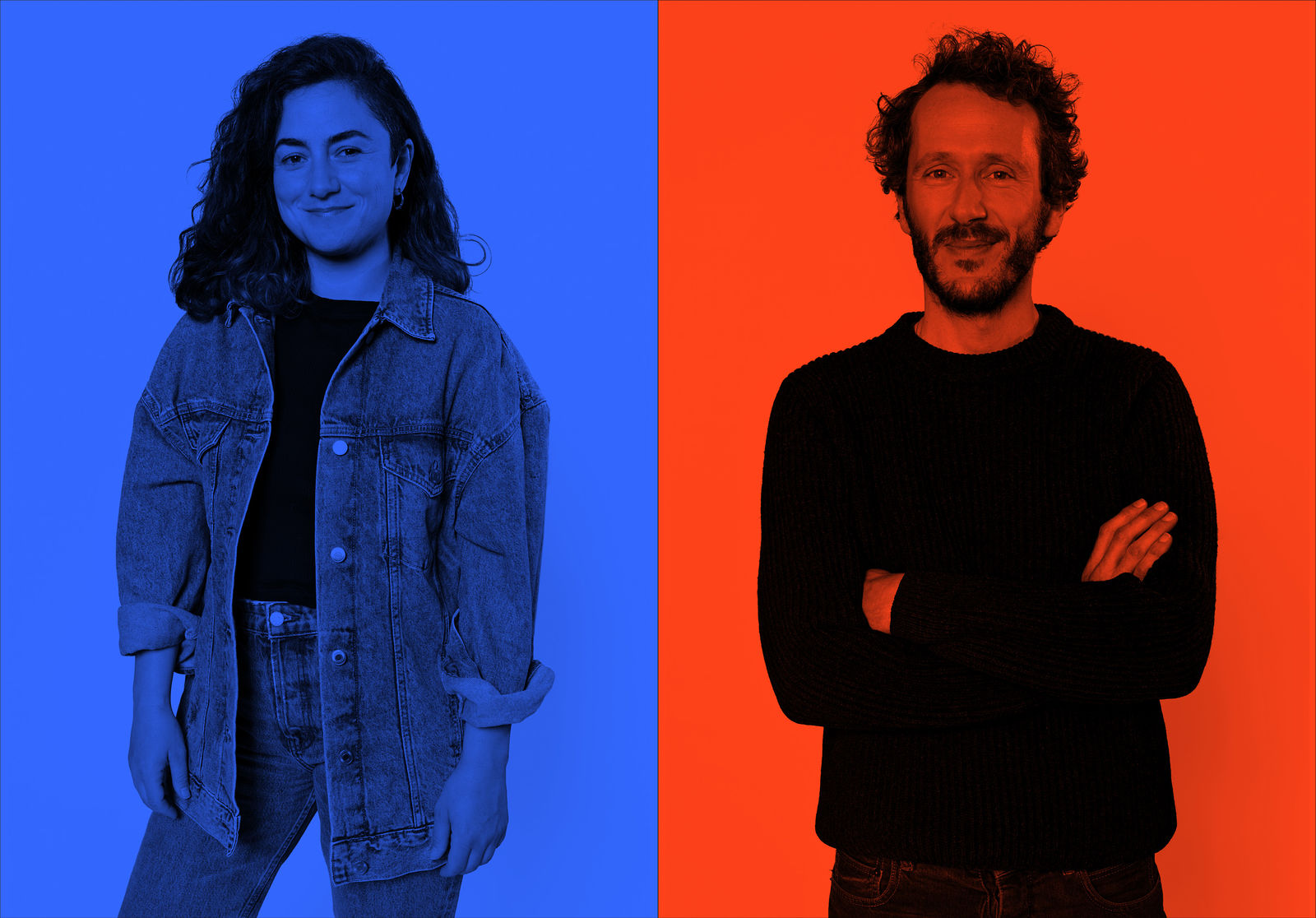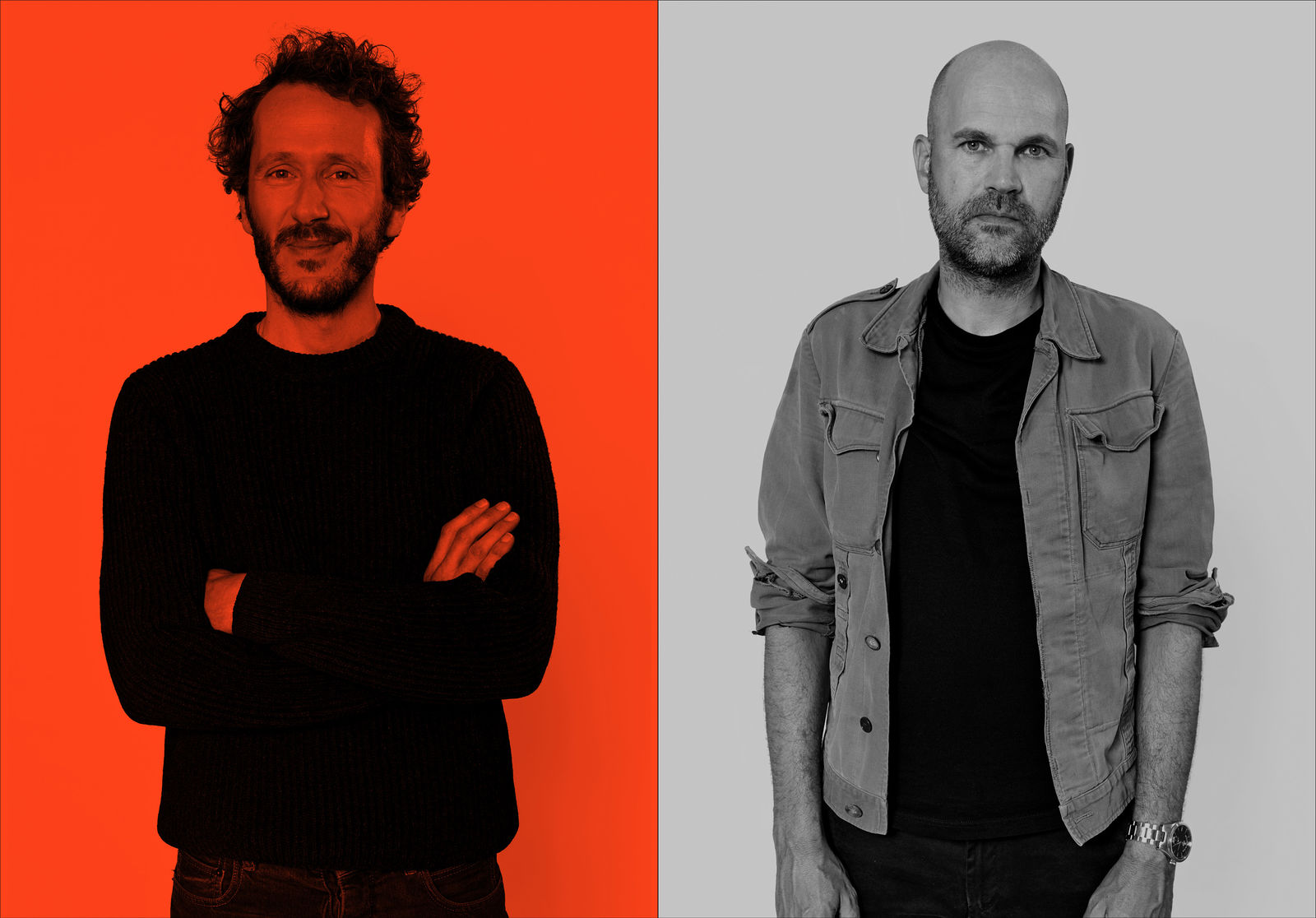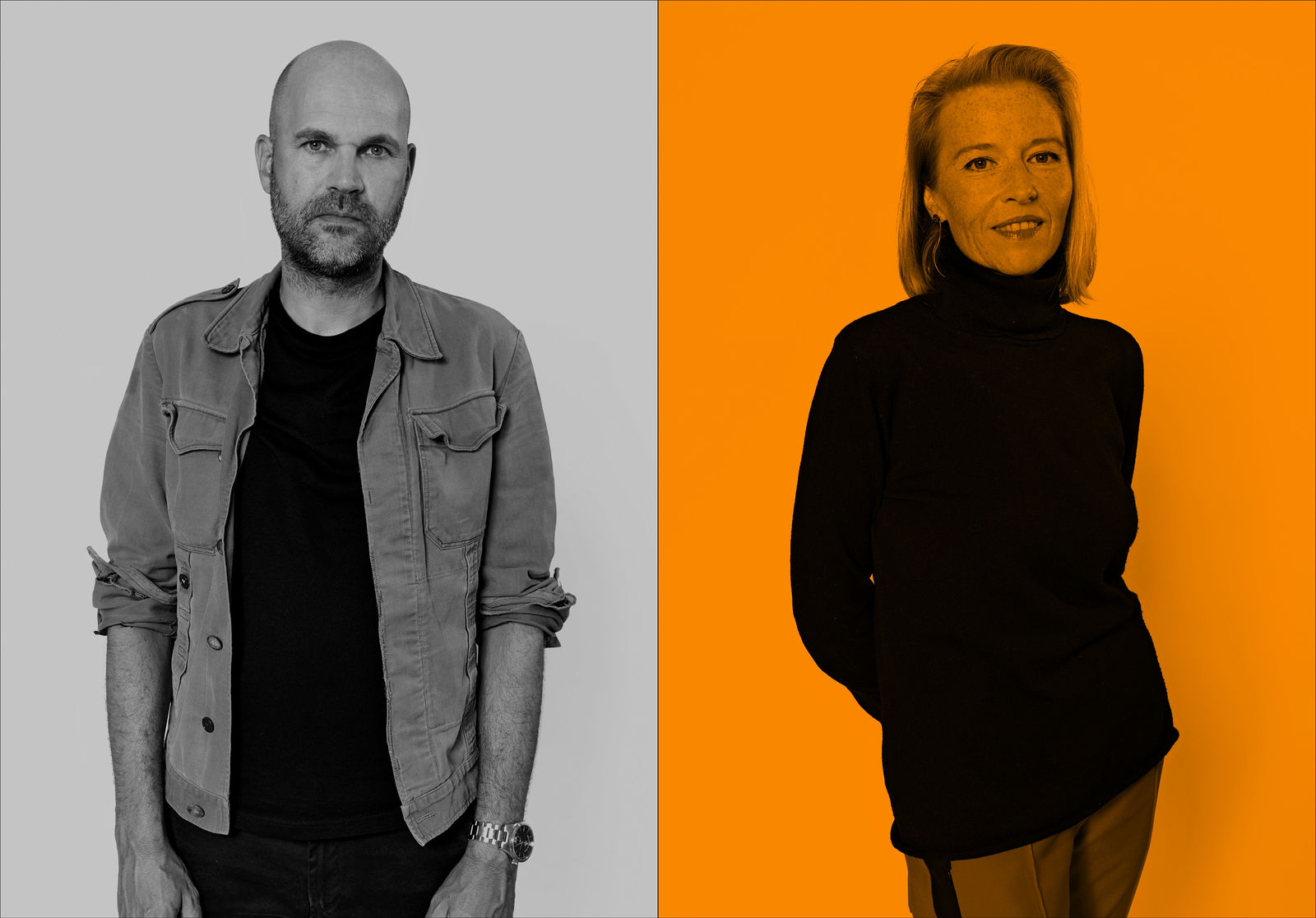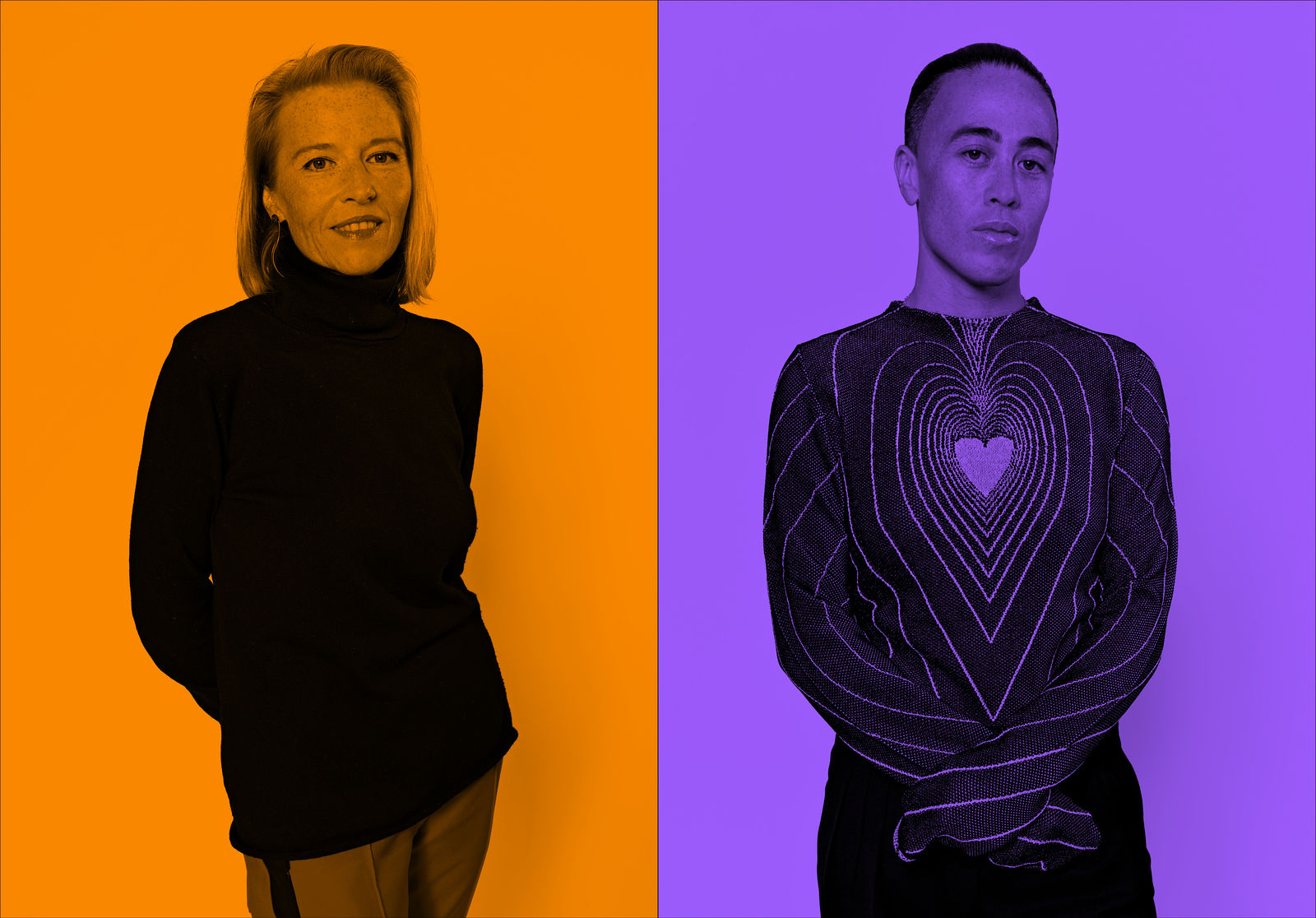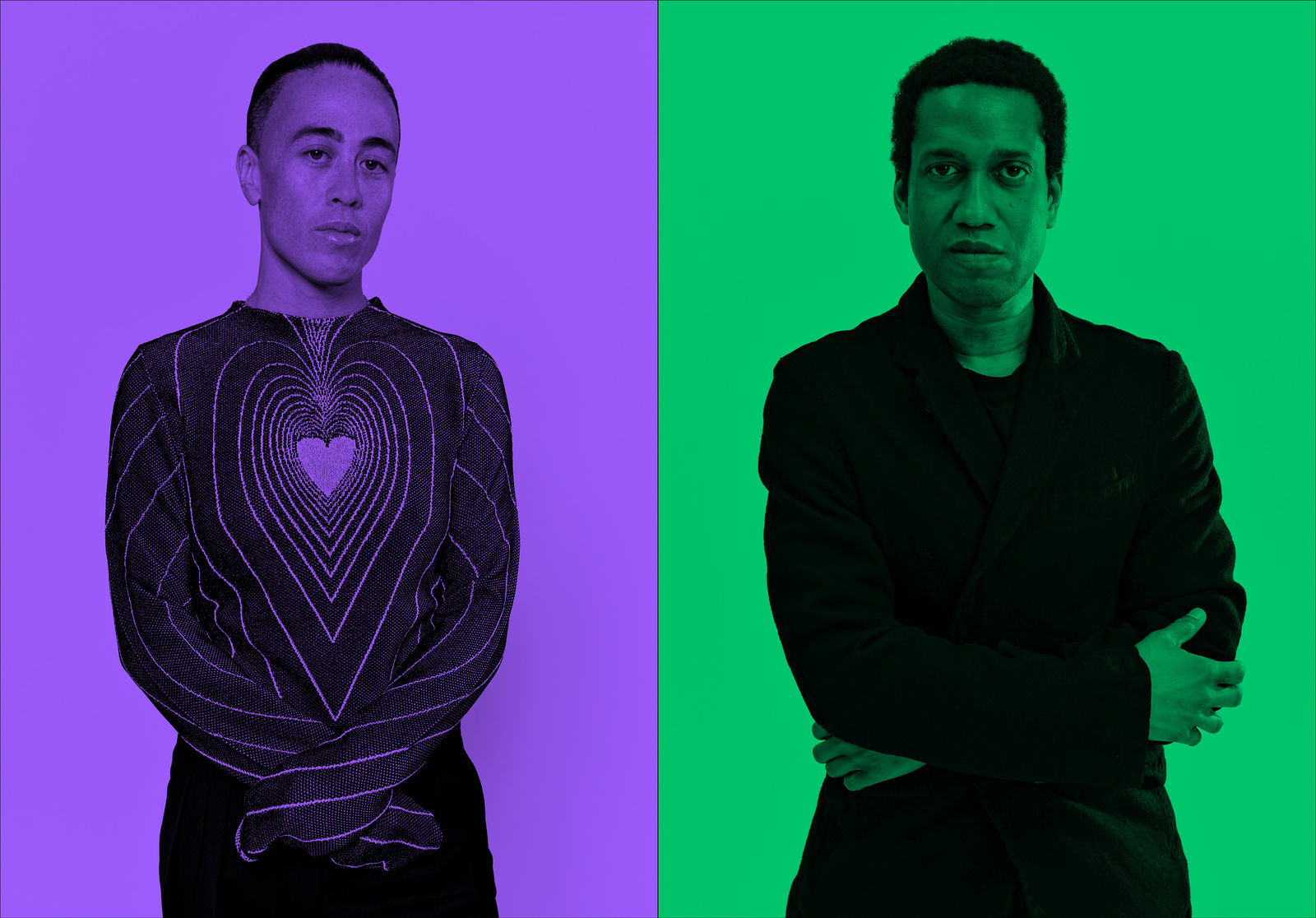Directors Talk:
Trajal Harrell and
Christopher Rüping
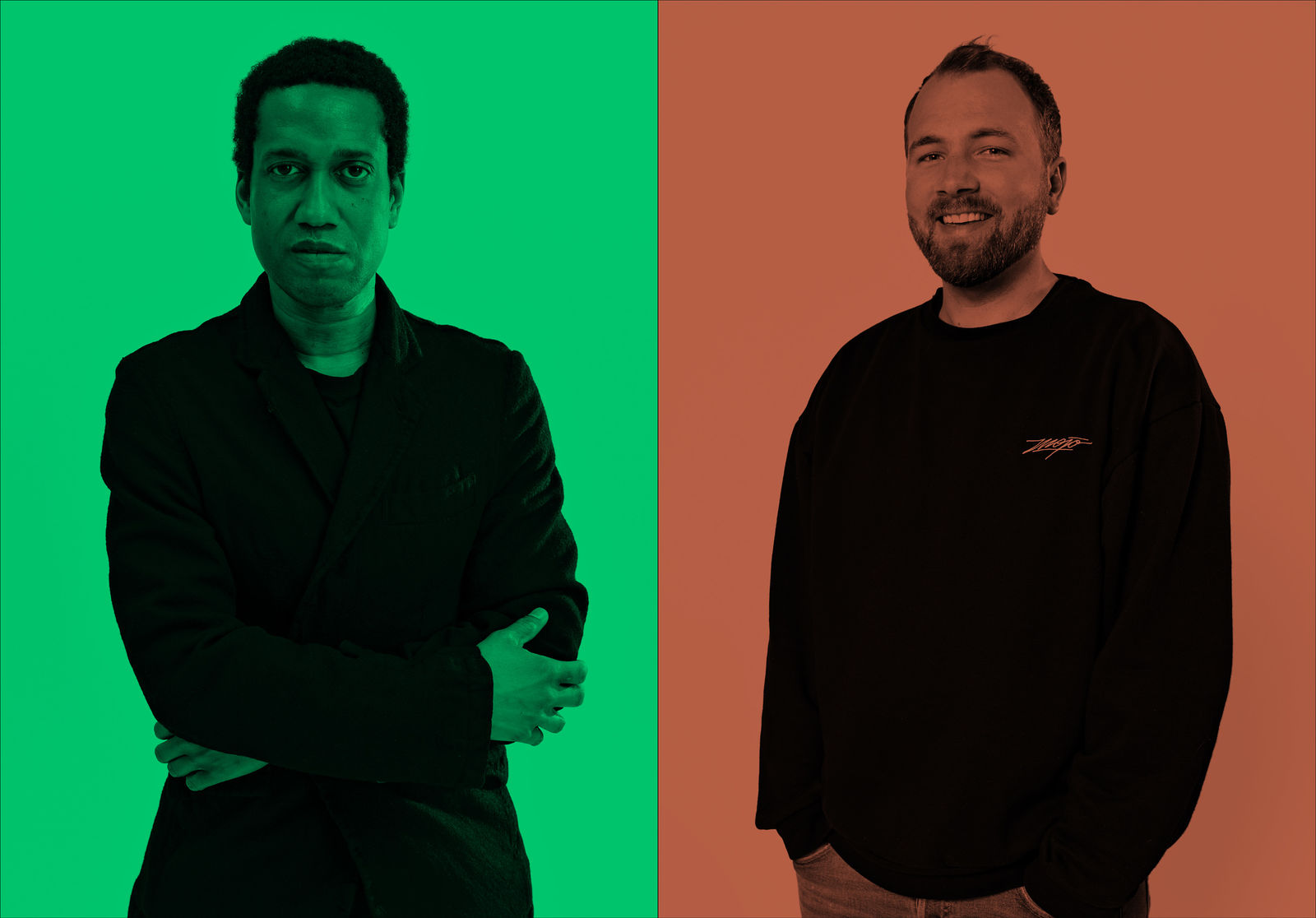
With the series Directors Talk you can bring our in-house directors Alexander Giesche, Suna Gürler, Trajal Harrell, Yana Ross, Christopher Rüping, Nicolas Stemann, Wu Tsang, and co-artistic director Benjamin von Blomberg along with you into the productions of the 2021/22 season in eight conversations. During the second lockdown they met on Zoom to talk about here, now, and tomorrow, mainly in pairs and once round-robin. The conversations are part of the season preview, which presents the 2021/2022 season and is available now in all our venues, as well as free to order online.
published on 29. August 2021
“I want to get myself off my back.”
[15:01] Trajal Harrell: Hi Christopher. Christopher Rüping: Hi Trajal. We’re so on time, it’s unbelievable. Look at us being so punctual. I just came from Wu, so I cheated a bit. How was it? How was your talk with Wu? It was good. Actually, it was funny because Wu and I were just saying we both at some point in our careers, maybe sooner, maybe later, want to do operas. And as I know a little bit about the project that you will do next season, I thought of you! Yeah. First of all: I would love to see an opera by Wu and by you. Please, if you ever do it, let me know so I can come and watch it. For me, it’s a strange thing with opera. My father was a fan of Richard Wagner, the Ring of the Nibelung-guy; and when I was twelve, he took me to see the final part of the Ring in Hannover, where I grew up. It was such an overwhelming experience that I was physically sick for two weeks after. And now, we’ve come up with this Wagner-thing and I’ll do the Ring next season… Don’t know what to make of it. Though in the project, Wagner will only be there in quotations, in the atmosphere, perhaps in some soundscapes. And you as well? Will you work on opera next season? Work specifically with music? I will work with Asma¹ for my first production next year and that changes something for me. Usually, I make the soundtracks for my pieces myself, mainly on iTunes and Garage-Band. But somehow, now I would like to go deeper into music. I’m headed in a different way of relating to music. I guess you’re making original music for the Wagner? Two musicians will work with us: Black Cracker², who is based in Berlin and has a very broad musical background, and Jonas Holle with whom I’ve already collaborated before. We talked a lot about this whole idea of Wagner’s “Gesamtkunstwerk”, one guy doing everything: music, words, stage design, and costumes, everything coming from one perspective. We would like to fix that and have many different perspectives and backgrounds. That is why [Black] Cracker and Jonas [Holle] assembled an orchestra of musicians – though not an orchestra in the classical sense but a group of independent musicians doing very different things with a variety of backgrounds. Each one of those eight musicians composed eight minutes of music. Now we have these 64 minutes of music inspired by Wagner or somehow relating to Wagner; and these 64 minutes will form into a dynamic score that is generated by Cracker from all of these pieces. For me this is a totally new approach to music and it’s interesting that you describe a similar shift. When I watched your Köln Concert³, I already realised that it’s a different approach to music than you had before. There was more concentration, more simplicity than before, when you had combined a lot of different musical styles. Will you continue doing it that way? Can we expect only one single work of music to be in your show? Perhaps a work by Asma? For my first piece Monkey off my Back or the Cat’s Meow, where I will work with Asma, we will do a collage, like I usually do. I think Asma’s talents will allow me to do things that I’ve not been able to do before. Actually, each season I’m trying to think one piece to be more heavily based on text and one piece where I go deeper, deeper, deeper into music. So I think with the second new piece I want to go deeper into music. How many pieces are you doing next season? I do two. Or well, three. One is Monkey, mentioned above. Then I’ll do one piece that we’ve been hanging on to, The Deathbed of Katherine Dunham, that was postponed from March 20 to March 21 to March 22. Deathbed is almost ready, the big first rough draft is done, and I feel very okay about it, and don’t have to do major changes. It’s probably good it had to lie down for a while. And then I’ll make a third piece in Zurich, but the premiere in May 2022 won’t be here, and it will only come to Zurich in 22/23. So, I’ll premiere two new pieces in Zurich next season. If you work on three pieces next season, how do you think about scale in these pieces? Most of your works that I know had a similar amount of people on stage, except for In the Mood for Frankie⁴. Most of the time you were seven or nine dancers on stage? I think this is a state-theater-thing. Frankie was produced by my own little company, so we weren’t able to do something big. Nine on stage was huge for us. The bigger pieces started when I stepped into bigger institutions. It’s been progressing little by little. In Monkey off My Back or the Cat’s Meow I go to performers! I make it big. I want to do a big cast. As I work in museums as well and make pieces for visual art contexts, I think that the state theater system has given me the opportunity to work on a larger scale that I wouldn’t be able to do with my own company. I think of Monkey as an extra-large piece. Extra-large? Nice. Meg Stuart⁵, who is a friend and a mentor for me, talked to me a lot about her time here at the Schauspielhaus. And one thing she told me was to make sure that I made things of different scales. That I should not only get caught up in the big scale just because I can do it. I know that after Zurich is over for me, I might not always have these opportunities, but I also love little pieces, I love doing things for small audiences. I love the feeling of it. To me, the amount of people that will be on stage has the biggest impact in terms of scale. If I had one hour and ten people, in the end nine of these ten people would be unhappy because they might feel like they didn’t really contribute to the work. I can only manage a limited amount of people in a limited amount of time. Do you know what I mean? Yes. That’s different in theater and dance. In theater, actors really feel like their role has a certain amount of time, maybe because of how much text they speak. Whereas in dance, you have this thing where we’re on stage together, doing something together; that is different. Well, it can be the same, of course: “Oh, I have a solo and you don’t have a solo”. But I think it is easier for us somehow. Though it also can be a default mechanism, I feel. Like, what do they say? “There are no small parts, only small players?” Do you have this in German? Yeah, I know what you mean. But as soon as there is language involved, it’s different. It’s really hard to understand language if two people are talking at the same time. There’s always a shifting of power, because the person who speaks needs silence around them. In terms of speaking, there’s no real possibility of simultaneity. What I like about your pieces so much is that the performers are not all doing the same, but they’re doing something that relates to one another. It takes place at the same time and in the same space, but it’s not the same thing they’re doing. In theatre, you can do a choir where everyone talks about the same thing, but it feels very authoritarian to do that. This feeling with a group where everybody is on stage, doing their own thing and everything relates to one another, without competition, I like that very much, and I think that possibility really dies as soon as you start the talking-thing. But in Monkey you will use language, right? I don’t know. I’m also working with actors in Monkey, and the question is how we will get the dancers and actors on the same page. I think that integrating language is one of the ways. As I have a big cast, I don’t have a lot of time, so I don’t think we will generate texts but use existing texts. I just don’t want to worry about the quality. And the piece has no theme! My tendency for this piece is to make it a purée. I bring a lot of parts together, put them in the food processor, purée them, and then maybe bake them. It’s about having fun. I feel that I can somehow make something enjoyable. Really enjoyable. Just coming hopefully out of this pandemic, it’s important to enjoy again. To have some fun. And to find small and important ways to celebrate life. Is that the “monkey” you get off your back? Yes, yes, yes. The pressure, the co-productions, whatever it is, you get all this off your back! I get it. It’s beautiful, yeah. I feel that. Me, too. Basically, I want to get myself off my back; the struggle to make a piece and a theme, and to communicate this theme and the thing I want to say. If people just come out of this show and say “wow, that was an enjoyable night in the theater. I don’t know what the hell it was, but I enjoyed myself”, that would be great. I want to go for enjoyment. I really like this idea of liberating yourself from too much thinking about what a piece could or should be. That’s something I struggle a lot with and I think it’s the same for a many of us. I’m longing for this state where I can just meet people and then see what is going to happen. If we didn’t do the Ring next season, I would have strongly advocated for this project I keep talking about: to start with nothing! Like with the “monkey off your back”. To start at zero, no stage design… Will you have stage design beforehand or will you have nothing when you start? We have some stage design, but it doesn’t have any meaning. Usually, I was always using it to tie all the knots together, but now I’m just doing it because I like it. Of course, when nothing is in the foreground, we’ll have to look at what pops up in the background, but I’m not there yet. I don’t force any meanings. Just being together with people on stage. By the way: I heard you went on a blind date with the writer! Well, yes. The blind date went well, but it actually wasn’t a blind date. We had a little bit of history, even though it was more like a shared space than an experience together. We connected very easily, honestly. What Necati⁶ does is fixing canonical texts. He’s not rewriting, he says he’s “fixing” them. That’s his goal. It’s a very hands-on approach. There is also something on a personal level between us that clicks. I don’t know how it works sometimes. It’s just a good match. That’s great. It doesn’t always happen. Trajal, now we’ve been talking for some time and we need to come to an end. But it was super, super lovely to talk to you. I really enjoyed this. I think it was one of my favorite moments so far during our shared time in Zurich. Aww! Same same. So, have a good day. You too, Trajal. Ciao ciao, Christopher. [16:07]
1 Asma Maroof is a musician, ensemble member of the Schauspielhaus Zürich and part of Wu Tsang’s company Moved by the Motion.
2 Black Cracker is an American musician, poet and producer. He lives and works in Berlin.
3 Trajal Harrell’s Köln Concert featuring music by Keith Jarrett and Joni Mitchell premiered in the short time the theatres were allowed to run open in autumn 2020 and can now be enjoyed again at the Pfauen.
4 In the Mood for Frankie was the first work by Trajal Harrell at the Schauspielhaus, performed during the opening festival of 2019
5 Choreographer and dancer Meg Stuart worked regularly at the Schauspielhaus during Christoph Marthaler’s artistic directorship 2000–2004.
6 Necati Öziri is writing a revision of Richard Wagner’s Ring des Nibelungen for the Schauspielhaus Zürich.
